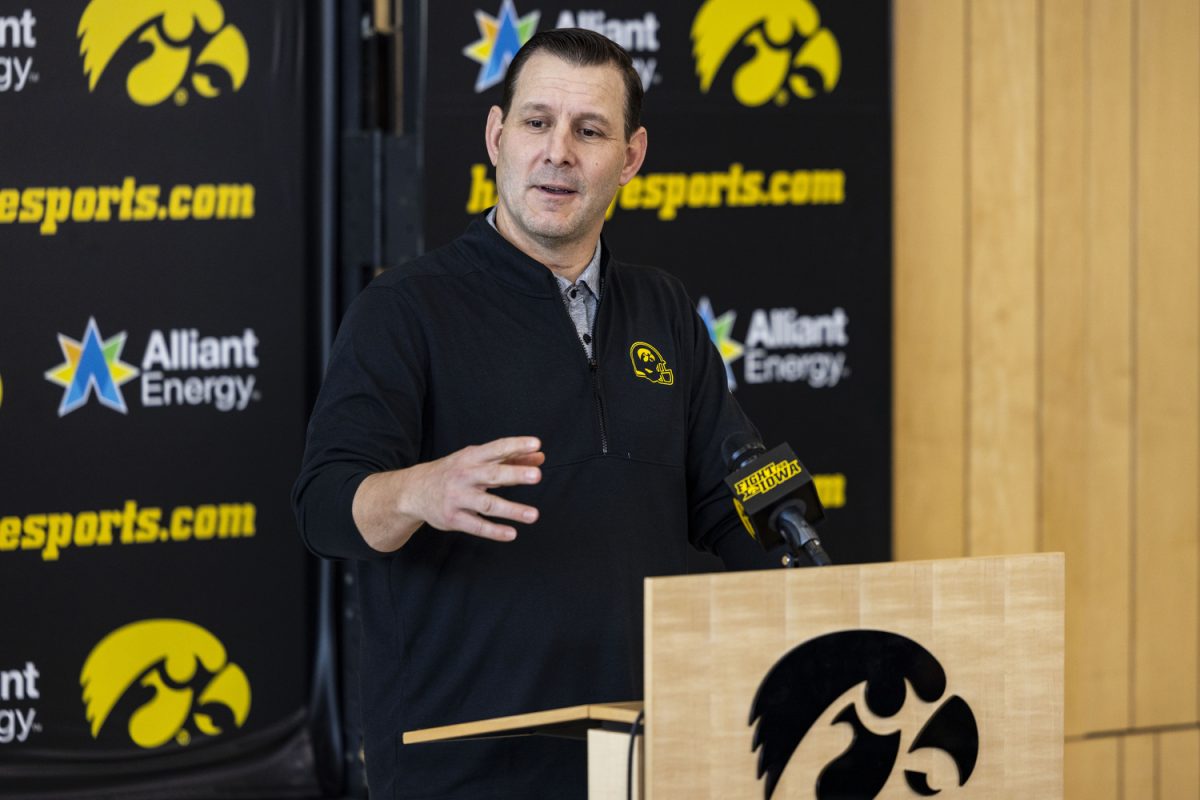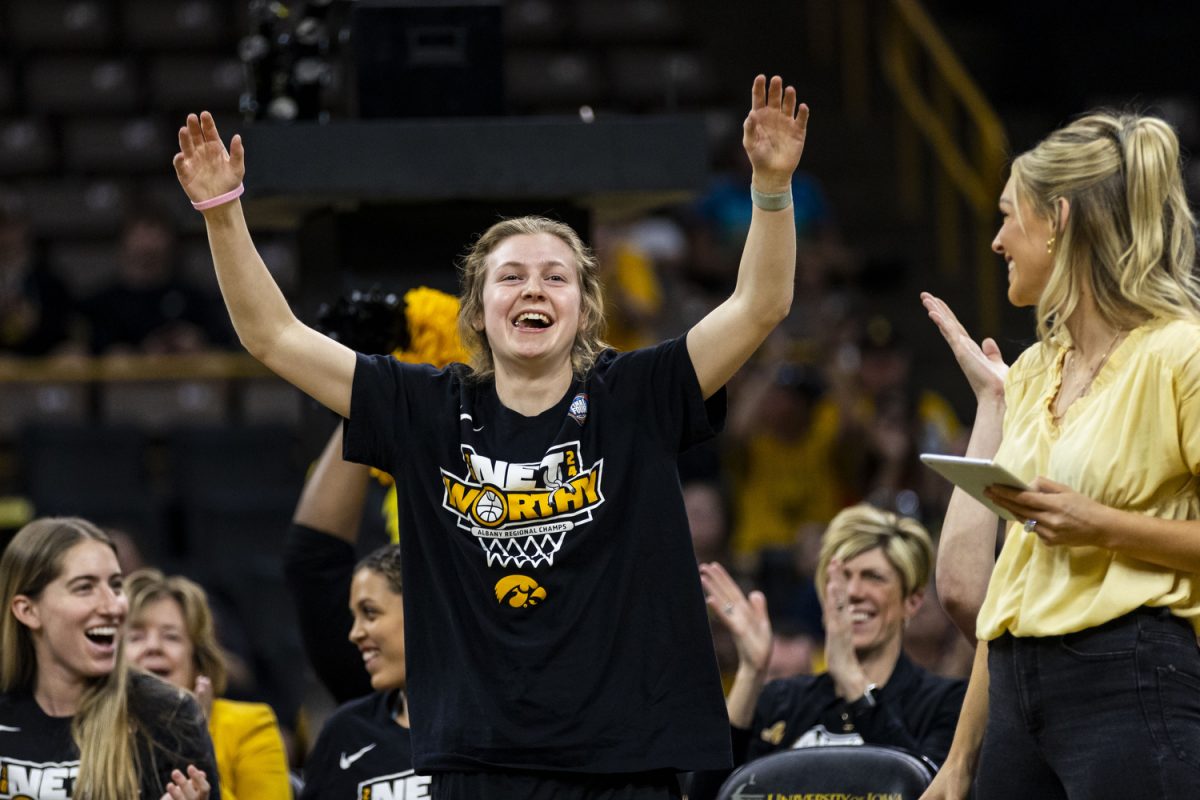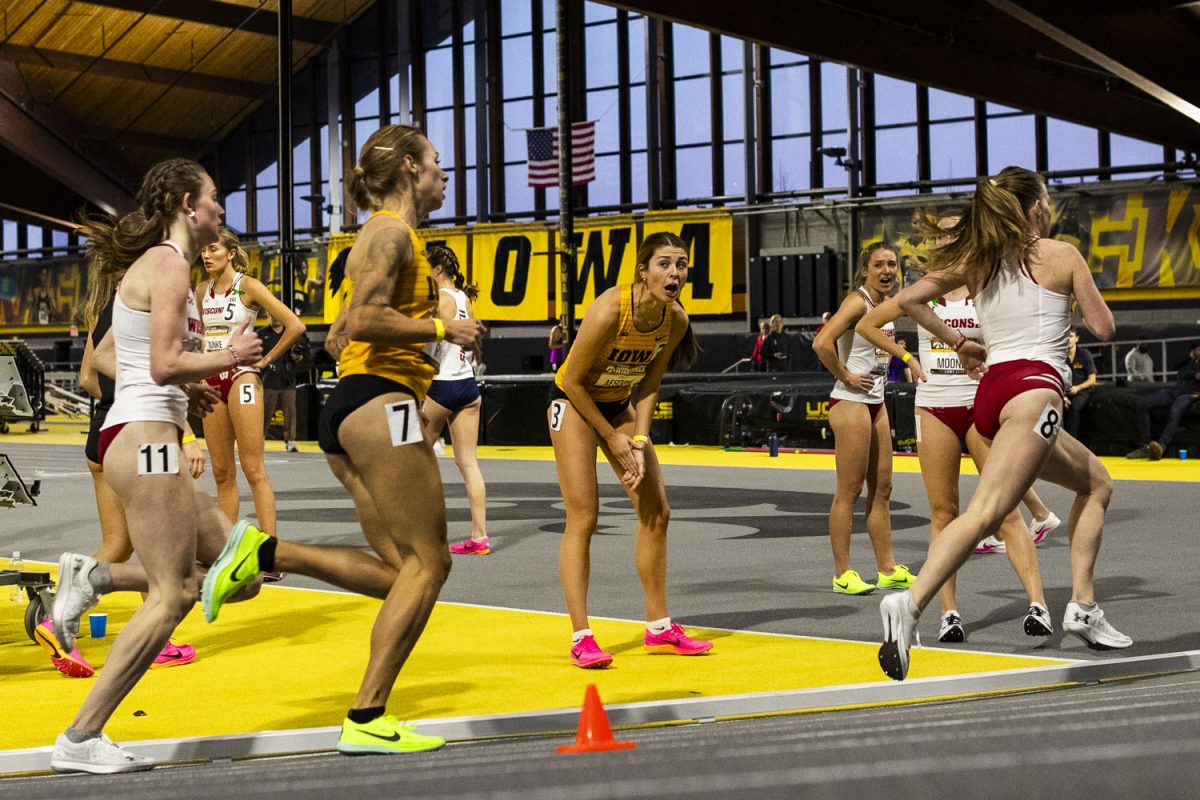
Tom Brands says some pretty interesting things sometimes. It’s part of what makes him, well, him. He’s quirky. Most everybody in the wrestling world knows that.
Take, for example, his boxing analogy from back in January. Brands was asked about the rankings ahead of the Iowa-Oklahoma State dual and offered one of the sport’s truest statements: “There is a knockout blow in wrestling, and that’s the fall.”
And if pinning someone serves as the knockout, then perhaps a takedown is the equivalent of a punch to the ribs. Do it enough, and, eventually, your opponent will lose the will to continue — or at least that’s the theory.
Iowa wrestlers have amassed 162 takedowns against Big Ten competition this season — they’ll get an opportunity to add to that total this Sunday against No. 17 Wisconsin — the team accrued as many as 300 or better in total this year. (The National Wrestling Coaches Association stat tracker doesn’t keep track of every individual takedown.)
Of all the takedowns executed by Iowa wrestlers, there are three that stick out because of their familiarity or flashiness. There’s Ethen Lofthouse’s high single leg. Another is Tony Ramos’s go-behind.
But perhaps the sneakiest one used by any Iowa wrestler — and is masterfully executed by 141-pounder Josh Dziewa — is the duck under, a move that has seemingly worked each time Dziewa decides to use it.
Dziewa wasn’t a guy who shot on the legs all that often in high school. But he needed a different way to score his 2 points other than simple drags and shucks. Dziewa compensated by sliding underneath his opponents’ elbows — “ducking” under them.
The setup involves allowing the opponent to gain inside control in the neutral position so that Dziewa can grip his opponent’s elbow with his left hand. Early in the match against Penn State’s Zain Retherford, Dziewa got exactly what he wanted.
With his arm clutching Retherford’s elbow, Dziewa lowered his stance while simultaneously sliding Retherford’s arm behind his own head. He then clamped his head on Retherford’s shoulder — doing so trapped Retherford’s arm, eliminating any sort of defense — and shimmied the rest of his body around for control. The process took about two-and-a-half seconds.
Retherford’s hand hit the mat in an attempt to regain balance; 2 points for Dziewa.
“That’s where I’m comfortable to start the match,” he said. “If guys are falling there, guys are falling there. If I get it two or three times a match, it’s almost their fault.”
The stars don’t always align for Dziewa. In his bout with Minnesota’s Chris Dardanes on Jan. 25, his Gopher opponent kept his distance and hand-fought his way out of inside control.
He more than likely learned from Dziewa’s loss at the Midlands Championships last December.
Against Illinois’s Steven Rodrigues in the tournament’s semifinals, Dziewa couldn’t grip the elbow at all because Rodrigues kept it far from his reach.
That opponents are starting to avoid that inside control doesn’t surprise Dziewa. Rather, it’s teaching him to move away from using the duck under so often.
“Guys know the duck’s coming,” he said. “But I’m actually trying to get away from it a little bit. It’s actually limiting my offense. I’m a little too comfortable there.
“When I’m in that position, I have a duck to one side and a single to the other. For the high crotch — the angle’s a little off. So if I can get more inside control, it just gives me more options. I can’t be dependent on this duck.”
Ramos has made a habit out of forcing his opponents to look up at the lights that hang from the ceiling of whatever arena he wrestles in. Usually, they’re on their backs when they see the lights — Ramos has pinned 24 opponents over the last two seasons.
But before he cinches up the fall, using anything from a cradle to a cowcatcher, Ramos likes to force his opponents to stare at the mat first, meaning he opens his offensive repertoire by hanging on his opponent’s neck. This tires them out because it forces them to use more of their neck and back muscles to try to keep their head up.
For Ramos, the go-behind is the simplest and most common way he scores his 2 points — though he admits he’d rather get to the legs each time. He’ll use his hands to keep the pressure on his opponent’s head, often times forcing them to their knees and their foreheads into the mat, making it easier to spin around without much of a threat.
“Guys are just letting me run around behind instead of going to their back,” he said. “There’s a benefit to it, but at the same time, it gets frustrating because you’re always chasing the guy around or you feel like they’re not wrestling you.”
But what Ramos has noticed is that his opponents have decided to back away or even turtle up to keep their elbows in with the intent of avoiding that cowcatcher or other big moves. This was more than evident against Penn State’s Jimmy Gulibon in December.
Ramos spent most of his match pressuring Gulibon’s head and neck, making him look down. When Gulibon dropped to his knees, Ramos shoved his forehead into the mat and scored using a simple go-behind. When Gulibon popped his head back up, Ramos ran through Gulibon for a double-leg takedown.
“Sometimes, it’s not even about technique with your shots but outfighting and blowing through someone,” Ramos said. “At the beginning of that match, I didn’t feel like there was anything open. I just had to blow through him with a double leg to open it up.”
And on the one time Gulibon opened up, exposing his arms, Ramos capitalized by forcing his arm through for an underhook. With that in hand, and Gulibon’s head gripped tightly, Ramos imposed his will, flipping Gulibon to his back for the “knockout blow.”
Lofthouse likes to think he hits whatever takedown is open when he wrestles someone. Often, he’s able to force his opponent to step into a sweep-single sequence and then follows that up by picking the leg up in the air.
Lofthouse found himself in that position against Buffalo’s Tony Lock. In the midst of an 18-6 major decision, with Lock’s right leg in hand, Lofthouse snuck his left foot behind Lock’s left foot and tripped him. Lock landed on his hip, and Lofthouse easily finished for 2 points.
“Obviously, people have their tendencies,” Lofthouse said. “You hit it a lot of times in practice, and then it just carries over to the match. You don’t even realize it. Your body just takes you to it.”
The goal in that position is to force the opponent to put weight on that lone foot, but that’s not always the case. A common form of defense against the high-leg single is to bounce on the mat while simultaneously attacking the offensive wrestler’s hands.
And there’s a trick to beating that, too. If the opponent begins to hop, Lofthouse looks for the trip. If he doesn’t, Lofthouse will just lift his opponent’s leg up high to throw them off balance. Another way to score the takedown is to straighten the leg already in possession and pull the opponent downward in the opposite direction — or, running the pipe, as it’s sometimes called.
“It’s all about the feel,” Lofthouse said. “I like the trip, but it’s mainly whatever works.
The executions aren’t always perfect, of course. Very rarely do any of the Iowa wrestlers perform textbook takedowns — the kind you might find on technique videos online.
But when it comes down to it, for the Hawkeyes, 2 points is still 2 points. And sometimes, “whatever works” is the easiest way to explain it.






